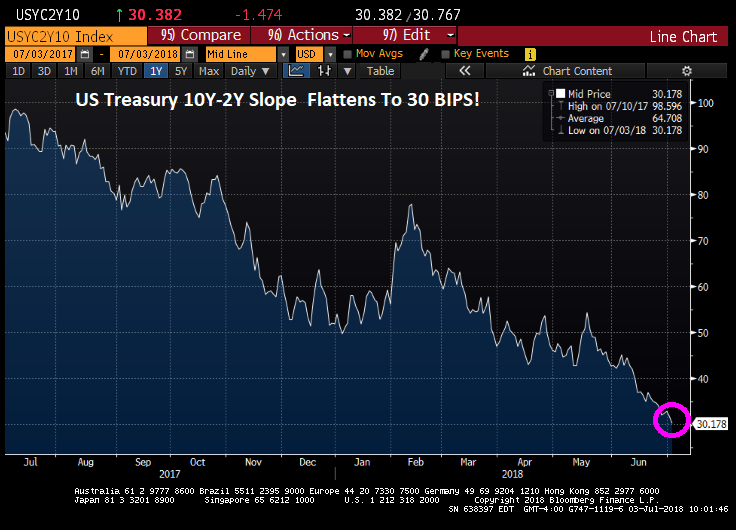Diamond News Archives
- Category: News Archives
- Hits: 1194
HTTP/1.1 200 OK Server: nginx Date: Tue, 03 Jul 2018 15:15:05 GMT Content-Type: text/html; charset=UTF-8 Transfer-Encoding: chunked Connection: keep-alive Strict-Transport-Security: max-age=86400 Vary: Accept-Encoding Vary: Cookie X-hacker: If you're reading this, you should visit automattic.com/jobs and apply to join the fun, mention this header. X-Pingback: https://confoundedinterest.net/xmlrpc.php Link: ; rel=shortlink Last-Modified: Tue, 03 Jul 2018 15:15:05 GMT Cache-Control: max-age=300, must-revalidate X-nananana: Batcache X-ac: 3.ewr _dca US Treasury Slope Flattens To 30 BPS (Break On Through To Inversion) – Online Course Notes For Financial Markets and Banking ...
 The NY Fed’s 10-year term premium remains in negative territory.
The NY Fed’s 10-year term premium remains in negative territory.  It won’t be an easy ride going forward.[20] Like this: Like Loading... Related
It won’t be an easy ride going forward.[20] Like this: Like Loading... Related - Category: News Archives
- Hits: 1723
The year over year core PCE price index was up 1.955% in May. If you round the data up, the Fed has finally reached its target for 2% inflation. This means it beat out expectations by about half of a basis point since the expectation was for 1.9%. It was higher than last month’s report of 1.81%. The month over month core PCE and headline PCE price indexes showed 0.2% growth which met estimates. Finally, the headline PCE price index was up 2.3% because of higher oil prices.
The core PCE is one of the lowest measures of inflation as the core PPI is at 2.4% and the core CPI is at 2.2%. The core PCE being at or above 2% is so rare that it has only occurred 4 months in this 9 year expansion. The hope for those who want inflation to keep increasing is that the rate will stay high, unlike the bouts of inflation in early 2012 and mid to late 2016 because the labor market is tighter and the supply chain is overheated as evidenced by the regional Fed manufacturing surveys. The bears on inflation will point out that the year over year comparisons in core PCE were helped by easy year over year comparisons just like the other short-term increases in previous years. As you can see from the Macrobond chart[1] below, the inflation rate in May 2017 fell to 1.48%. The comparisons will stay easy for the next 3 months until the core PCE growth in 2017 bottoms at 1.3% in August. If you look at a 2 year stacked growth rate, the April report showed 3.39% growth and the May report showed 3.43% growth, not much of a...
- Category: News Archives
- Hits: 1108

(IDEX Online) – The Israel Diamond Exchange (IDE) has hosted an official visit of a high-level delegation from the State of Gujarat, India, where IDE President Yoram Dvash and Chief Minister Vijay Rupani spoke of the close connection between the diamond communities of both countries.
Dvash and Rupani spoke about the growth and prosperity that the diamond trade brings to both sides, and discussed ways to improve the business ties between the two industries.
Dvash told his guests about the difficulties presented by the 6% tax levied by India on polished diamonds. “The tax makes it very difficult for Indian diamantaires who buy polished goods in Israel and for Israeli diamantaires who wish to trade with their Indian counterparts,” said Dvash. He also told the Minister that in discussions with leaders of the Indian bourse he discovered that reduction of this tax is a common interest of both Indian and Israeli diamantaires.
Minister Rupani agreed that free trade between the two industries is of great importance to both sides and promised to look into the matter.
Chief Minister Rupani was accompanied by several ministers from the State of Gujarat, as well as India’s DCM and Head of the Commercial Wing Dr. Anju Kumar. On the Israel side, the meeting was attended by Israel Diamond Controller Danny Tal, Israel Diamond Institute Chairman Boaz Moldawsky, Israel Diamond Manufacturers Association Chairman Jacob Korn and senior Israeli and Indian diamantaires.
Pictured above from left: IsDA Chair Jacob Korn, IDI Chair Boaz Moldawsky, Chief Minister Rupani and IDE President Yoram Dvash ....
- Category: News Archives
- Hits: 1535
HTTP/1.1 200 OK Server: nginx/1.13.5 Date: Tue, 03 Jul 2018 12:15:07 GMT Content-Type: text/html; charset=UTF-8 Content-Length: 233643 Connection: keep-alive Vary: Accept-Encoding, Cookie Cache-Control: max-age=3600, public X-UA-Compatible: IE=edge Content-language: en X-Content-Type-Options: nosniff X-Frame-Options: SAMEORIGIN Expires: Sun, 19 Nov 1978 05:00:00 GMT Last-Modified: Tue, 03 Jul 2018 12:15:06 GMT ETag: W/"1530620106" X-Backend-Server: drupal-69955bbf6d-zgkf9 Age: 0 Varnish-Cache: HIT X-Cache-Hits: 2 X-Served-By: varnish-0 Accept-Ranges: bytes ...
In San Francisco, Families Making $117,000 Qualify For Low-Income Housing | Zero Hedge Skip to main content [1]References
- ^ Skip to main content (www.zerohedge.com)
- Category: News Archives
- Hits: 1299
The dollar constitutes about 60% of global reserves, 80% of global payments and almost 100% of global oil transactions.
So the dollar’s strength or weakness can have an enormous impact on global markets.
Using the Fed’s broad real trade-weighted dollar index (my favorite foreign exchange metric, much better than DXY), the dollar hit an all-time high in March 1985 (128.4) and hit an all-time low in July 2011 (80.3).
Right now, the index is 95.2, below the middle of the 35-year range. But what matters most to trading partners and international debtors is not the level but the trend.
The dollar is up 12.5% in the past four years on the Fed’s index, and that’s bad news for emerging-markets (EM) debtors who borrowed in dollars and now have to dig into dwindling foreign exchange reserves to pay back debts that are much more onerous because of the dollar’s strength.
And EM lending has been proceeding at a record pace.
Actually, the Fed’s broad index understates the problem because it includes the Chinese yuan, where the dollar has been stable, and the euro, where the dollar has weakened until very recently.
When the focus is put on specific EM currencies, the dollar’s appreciation in some cases is 100% or more.
Much of this dollar appreciation has been driven by the U.S. Federal Reserve’s policy of raising interest rates and tightening monetary conditions with balance sheet reductions. Meanwhile, Europe and Japan have continued easy-money policies while the U.K., Australia and others have remained neutral.
The U.S. looks like the most desirable destination for hot money right now because of interest rate differentials. And that is having far-reaching consequences on EM economies.
A new EM debt crisis has already started. Venezuela...

